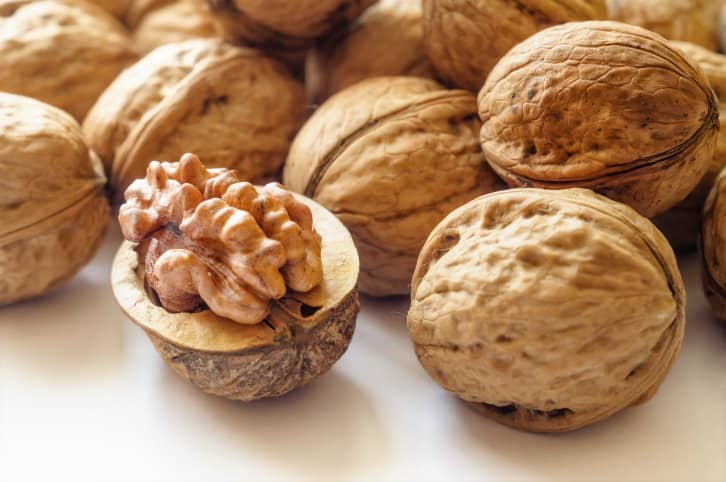 Whenever I smell the syrup of warm honey, cinnamon, and fresh squeezed orange juice, I know that it’s time for Christmas. Each year, my mother makes a huge pan of her signature baklava, whose syrup is a fragrant potpourri that permeates the home, to give as gifts. We look forward to it every year! Of course, it’s the family recipes that are always the sweetest and even though I’ve eaten a lot of baklava over the years, it’s always my family recipe that I constantly return to.
Whenever I smell the syrup of warm honey, cinnamon, and fresh squeezed orange juice, I know that it’s time for Christmas. Each year, my mother makes a huge pan of her signature baklava, whose syrup is a fragrant potpourri that permeates the home, to give as gifts. We look forward to it every year! Of course, it’s the family recipes that are always the sweetest and even though I’ve eaten a lot of baklava over the years, it’s always my family recipe that I constantly return to.
What is baklava exactly? Most recipes contain three basic elements – the nut-based filling, fillo dough, some kind of fat to brush on the fillo to make it crispy, and a sweet syrup to pour over the pastry once it comes out of the oven. As long as those basic elements exist, it’s still considered “baklava” despite the differences.
Differences in Baklava Recipes
 There are two things that I noticed about this popular Greek dessert. The first is that many cultures claim baklava as their own, and there are often debates as to who makes it better. In India, for example, their baklava often contains rosewater, an ingredient you almost never find in the Greek version. Other cultures that have their own versions of the dessert include the Armenians, Persians, and Lebanese.
There are two things that I noticed about this popular Greek dessert. The first is that many cultures claim baklava as their own, and there are often debates as to who makes it better. In India, for example, their baklava often contains rosewater, an ingredient you almost never find in the Greek version. Other cultures that have their own versions of the dessert include the Armenians, Persians, and Lebanese.
Not only that, but within these countries, every family makes it differently. Greece is no exception. My family uses orange and cinnamon for the main flavoring in the syrup, for example, and other recipes I’ve seen omit the orange and include Greek brandy and even Ouzo. Some family recipes include sugar, others don’t. I have an Armenian friend who swears by his simple sugar syrup for his baklava. My family’s use of orange, to him, was a little perplexing.
Origin of Baklava
Because the Ottoman Empire occupied Greece for around 400 years, it stands to reason that it influenced the culture, particularly the cuisine. As they expanded their empire, they brought elements of their culture to the places they occupied. In Greece, one of the biggest places where the Ottomans left their mark is on the cuisine.
However, there is some debate as to whether or not baklava actually originated with the Ottomans. Some food historians credit the origin to the Roman Empire. However, one thing is clear – it’s the Turks who were initially responsible for spreading the dish to other countries besides Greece like Lebanon and Armenia.
Popular Baklava Ingredients
 How do you make your baklava? My family uses butter, fillo dough, walnuts, sugar, honey, and cinnamon in their recipe. Here’s an overview of some of the ingredients you can find:
How do you make your baklava? My family uses butter, fillo dough, walnuts, sugar, honey, and cinnamon in their recipe. Here’s an overview of some of the ingredients you can find:
- Fillo – There are two types of fillo where one is thicker than the other. Homemade fillo tends to be thicker than manufactured fillo.
- Fat – In order for the fillo to get crispy, each layer is brushed with some kind of fat. For Greek recipes, this is usually either butter or olive oil.
- Nuts – Most Greek baklava recipes use walnuts but other nuts such as almonds and pistachios, which are all grown in Greece, can be found as well.
- Sweet – Both the nut filling and the syrup are sweetened with honey, sugar, or both.
- Spices – My recipe only calls for cinnamon but every now and then, I’ll add a pinch of nutmeg or cloves to the filling to give it an extra kick. Recipes in Greece often include mace, as well.
- Syrup – The sweet syrup is usually made from sugar, honey, spices, citrus, and even spirits such as brandy. My recipe uses honey, sugar, orange, and cinnamon.
Even though I love my family’s recipe, it’s still fun to experiment the ingredients to come up with my own unique twist!
If you are looking for a standard recipe, take a look at our Baklava recipe here! Many baklava variations also exist that are worth exploring, such as this one, which uses chocolate.

